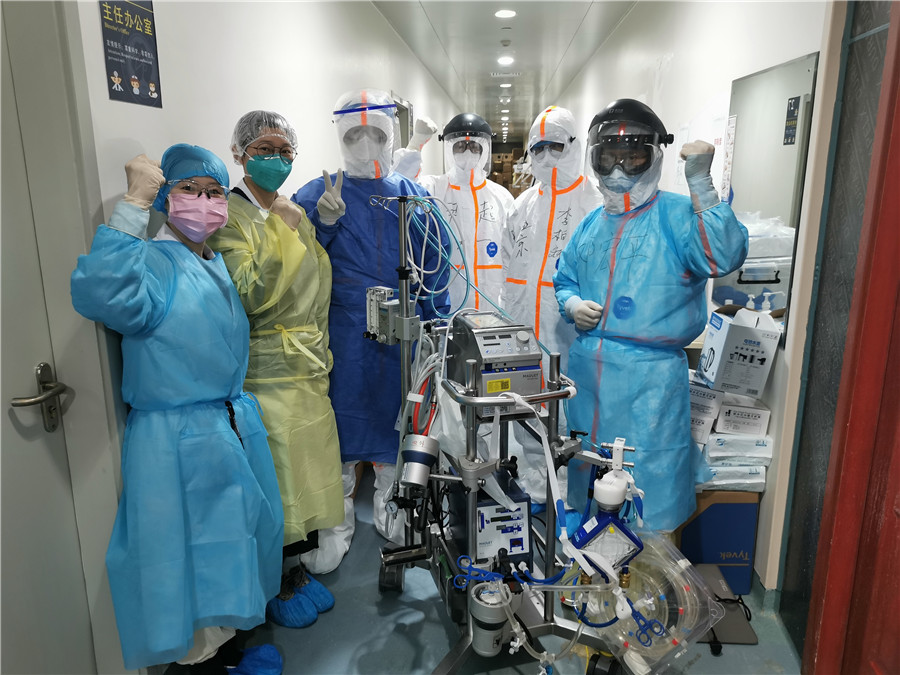
Ding Renyu (third from left), chief of a medical team from Liaoning province dispatched to Wuhan, Hubei province, and his teammates prepare extracorporeal membrane oxygenation, an advanced life support technology, for patients at Renmin Hospital of Wuhan University. YIN CHAO/FOR CHINA DAILY
Ding Renyu was so focused on his work with patients at a hospital in Wuhan that he didn't realize his mask had caused the bridge of his nose to bleed.
As chief of the Liaoning intensive care team, Ding is leading 150 medical workers from Liaoning province who have traveled to Wuhan, Hubei province. They are now responsible for 72 patients in Renmin Hospital of Wuhan University, 39 of whom are over 60 years old and most are in critical condition.
"We are racing against death. Most patients are in quite serious condition. The key to reducing mortality is to keep their condition stable," said Ding, who is also deputy director of the Department of Critical Care Medicine of the First Hospital of China Medical University in Liaoning.
A 95-year-old patient surnamed Wang is one of the oldest. He is suffering not only from novel coronavirus infection but also a stroke and excess urine in the kidneys. A weak body coupled with a variety of basic diseases has placed him on the brink of death.
To save Wang, Ding arranged a special care package that includes food and medicine as well as services including bathing, diaper changing and room disinfection.
It may usually be less difficult to carry out treatment, but because of the epidemic, medical staff are wearing three layers of surgical gowns, protective clothing and disposable isolation clothing.
In addition, the exposed parts of their hands and feet are sealed with tape.
"It is just like an oven inside the protection gear," said Yin Fang, head of the nursing team. "You will sweat a lot even without moving. But we medical staff have to work for six hours each time and seldom get time to sit down. Everyone is bathed in their own sweat after work."
To save valuable protective clothing, nurses wear diapers, and some don't drink water two hours before work.
"You don't know anything about your body when rescuing the patients. My life here is catch a breath and keep fighting," said Ding, as he wiped the bloody scab on his nose with an iodine cotton swab.
By Sunday, Ding's team had rescued 90 critical patients, nine of whom have been transferred to hospitals for patients with mild symptoms.
Wang Zhenning, Party secretary of the First Hospital of China Medical University, said: "During the revolutionary war, we were medics for the Red Army, and now we are medical staff for the public. But our first intention never changed. To heal the wounded and rescue the dying is our duty."
China Medical University, founded in 1931, was the first medical school established by the Communist Party of China. In the past 90 years, it has made outstanding contributions to the nation's medical and health undertakings.
In addition to the team working at Renmin Hospital of Wuhan University, Liaoning has sent 1,730 medical workers to Hubei. They are mainly responsible for caring for severe patients at Leishenshan Hospital and Wuhan Union Hospital.
More than 1,000 Liaoning medical workers are now at Wuhan Leishenshan Hospital, accounting for 62.5 percent of medical staff there.